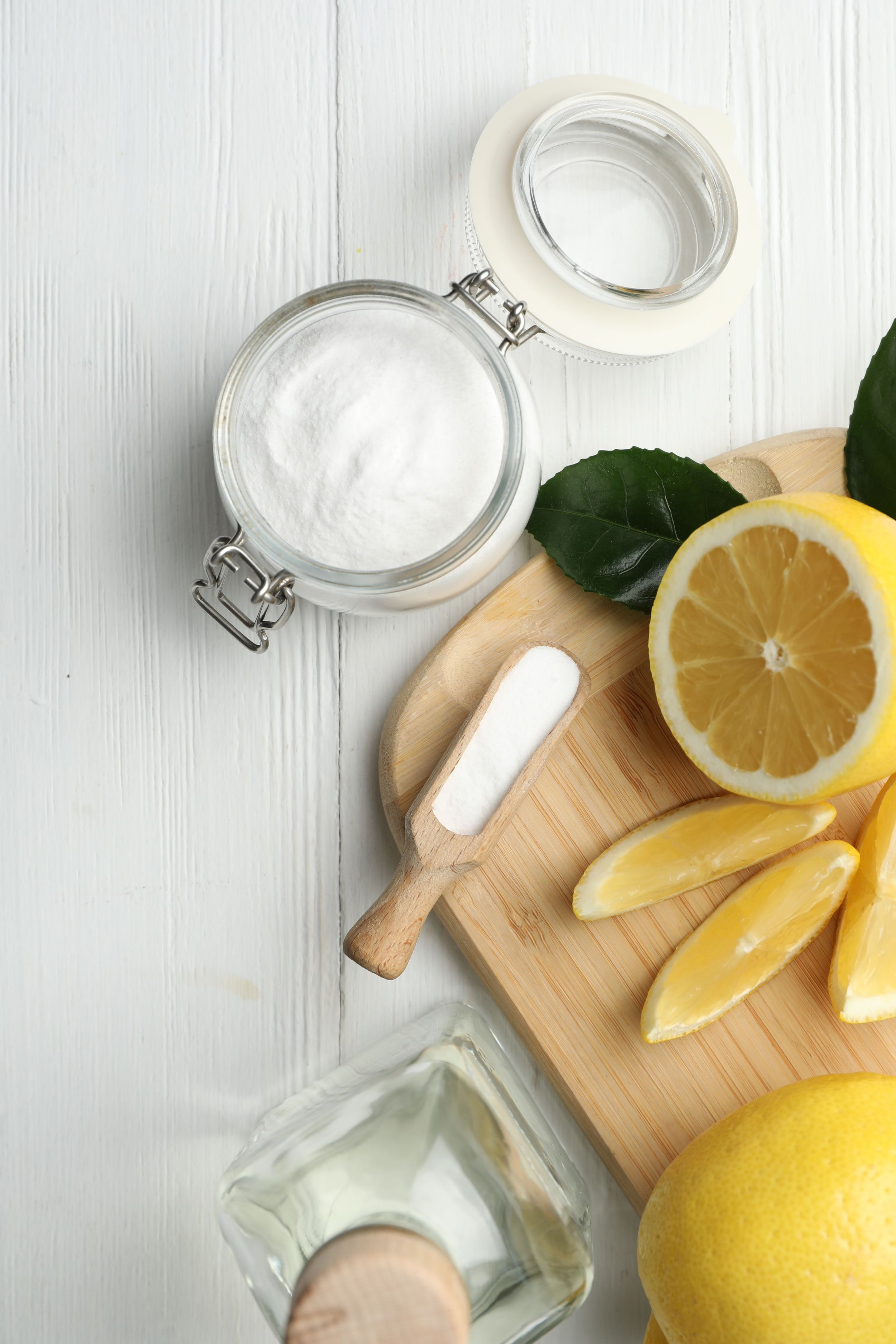Here’s How Often You Should Be Cleaning Your Favorite Household Appliances (And How)
The Ultimate Guide to Cleaning the Machines that Make Your Life Easier
It's a bit ironic, isn't it — that the things we use to clean our things might just be in need of a cleaning themselves? It's a household chore that many of us overlook, but it's crucial for ensuring our homes are truly clean and safe.
Why Cleaning Your Cleaning Appliances is a Must
Before we jump into the how-to, let's talk about why this is non-negotiable. And if you’ve found yourself Googling, "Do I really need to clean my washer and dishwasher?" Let’s have a chat.
Machines like dishwashers, washing machines, and vacuum cleaners accumulate dirt, grime, and bacteria over time. And when they are neglected or improperly maintained, it can lead to decreased efficiency, unpleasant odors, and the eventual need for a replacement.
So, what’s the recommended schedule for cleaning these essential household machines? Don’t worry, I have just the thing you need. While there’s a ton of information out there, I’m here to give you the straightforward, no-fluff guide to keeping these time-saving machines in tip-top shape. So, let’s get into it!
The Ultimate Cleaning Schedule for Your Household Appliances
1. Deep Cleaning the Dishwasher
A study by the National Sanitation Foundation found that dishwashers are one of the most germ-infested places in the home. So it’s safe to say that dishwashers needs some extra love in households everywhere.
To do this, there are two different routes you can choose from: the convenient route or the more natural ingredient route. I personally have tried both and the determining factor for me is solely based on the season of life I’m in — if I have additional time or not. With either cleaning option, this prevents lime scale and soap scum buildup, ensuring your dishes come out spotless every time.
The Convenient Route:
Detach and rinse out the filter, located in the bottom of your dishwasher, at least once a month to remove debris.
I highly recommend Affresh Dishwasher Cleaner tablets. If choosing to go this route, I encourage you to buy a year’s supply at a time, so you don’t have an excuse to procrastinate cleaning. Then once a month, throw in one to two tablets, depending on the amount of build up, and run a hot-water cycle. Feel free to repeat the cycle as needed to remove remaining odors or buildup.
For an additional deep clean, run an empty hot-water cycle with one cup of white vinegar on the top rack once a quarter. Depending on if you have high traffic or hard water, you may find yourself needing to do this more or less often based on usage.
The Natural Ingredient Route:
Detach and rinse out the filter, located in the bottom of your dishwasher, at least once a month to remove debris.
Mix together 2 cups of baking soda and 3 tablespoons of hydrogen peroxide to form a paste. Scrub the interior of the dishwasher with the paste as needed to remove additional buildup. Then, run your empty dishwasher on a hot-water cycle.
*If there’s not visible buildup to scrub, you can skip the paste-making part and instead sprinkle baking soda in the bottom of your empty dishwasher before running a hot-water cycle.
For an additional deep, chemical-free clean, run an empty hot-water cycle with one cup of white vinegar on the top rack once a quarter. Depending on if you have high traffic or hard water, you may find yourself needing to do this more or less often based on usage.
Disclaimer: Do not use baking soda and vinegar at the same time, when cleaning your dishwasher. If you choose to use both #2 and #3 as mentioned above in the natural ingredient route, run a hot-water cycle with the baking soda first before repeating the process with the vinegar. By using both ingredients simultaneously, they actually neutralize each other, and the benefits will be cancelled out altogether.
2. Washing Machine Musts
Research suggests that a poorly maintained washing machine can harbor more bacteria than your average toilet seat! Yuck! So make sure that you maintain this machine once a month. Similarly to cleaning your dishwasher, you have two different options you can go with based on the amount of time you have or your personal preference on the type of cleaning products in your home. Regardless of which route you choose, remember that regular maintenance avoids unpleasant odors and ensures your clothes come out fresh every time.
Option One: The Convenient Route
I highly recommend Affresh Washing Machine Cleaner tablets. If choosing to go this route, I encourage you to buy a year’s supply at a time, so you don’t have an excuse to procrastinate cleaning. Then once a month, throw in one tablet, as described on the Affresh packaging, and run a hot-water cycle or the designated “clean cycle” if that is available on your washing machine. Feel free to repeat the cycle as needed to remove remaining odors or buildup.
After the cycle ends, wipe out the drum, the rubber gasket, and the inside of the door once a month or as needed.
Disclaimer: Make sure to leave the door to the washing machine open, when not in use, to allow the space to dry out and prevent mold.
Option Two: The Natural Ingredient Route
Run an empty hot cycle with two cups of white vinegar monthly.
After the cycle ends, wipe out the drum, the rubber gasket, and the inside of the door once a month or as needed.
Disclaimer: Make sure to leave the door to the washing machine open, when not in use, to allow the space to dry out and prevent mold.
3. Dryer Dos
A clogged dryer can be a fire hazard – in fact, the U.S. Fire Administration reports thousands of home fires each year caused by clothes dryers. So, let that be your reminder that regular cleaning reduces this risk significantly.
When it comes to your dryer, you’ll want to clean the lint trap (inside your dryer) after each use. If you’re having difficulty removing all the lint, you can use a vacuum or designated lint brushes (I highly recommend these dryer lint brushes) to remove additional lint from your dryer. You can also gently scrub the lint screen with dish soap and warm water, rinse with hot water, allow to dry, and reinstall the screen.
Also, you’ll want to thoroughly clean the hoses and vent leading to the exterior of your home every six months. You can do so by disconnecting the duct from the wall if possible for maximum access. Then, remove any lint accumulation by hand and follow up by vacuuming the inside. Be careful not to damage the vent duct. If this intimidates you, there are businesses you can call to come to your home twice a year to ensure you are properly removing the lint and any blockages from your home.
For additional deep cleaning of your dryer, unplug the machine and remove the back panel and exhaust hose. Use a vacuum and cloth to wipe down the interior and exhaust areas of your dryer.
4. Vacuums — Suck Up Dirt, Not Problems
A clogged vacuum can’t do its job right. Plus, clean filters mean cleaner air in your home. Aim to empty the canister or replace the bag every other month. Please know that you may need to do this more often if you have pets or children. I personally clean out the vacuum canister once a week and simply bundle it into my weekly cleaning schedule, so it’s not an additional task.
Now when it comes to your vacuum filter, make sure to check the manufacturer’s guide, but typically, a clean and/or replacement every 3-6 months does wonders. Again, depending on your lifestyle and the season of life you’re in, you may need to do this more often. I change the filters in my vacuum once a quarter and notice an extreme decline in it’s functionality if it’s not changed on time.
Pro Tip: For bagless vacuum models, a warm soapy wash for the canister does wonders.
5. Steam Cleaner Care
If your steamer is not maintained properly, leftover moisture can lead to mold growth and mineral buildup. So make sure to rinse the tank and empty it after every use. For a thorough clean, a vinegar and water mix can be used quarterly for routine maintenance. To do this, simply fill the tank with 1/3 white vinegar and 2/3 distilled water and run the steamer through two to three cycles of this process. Then, ensure the tank is empty and allow to air dry. This will remove possible clogs and mineral build up on your machine. Make sure to only use distilled water in your machine to prevent mineral buildup. Remember, a clean steam cleaner means more effective disinfection and cleanliness throughout your home.
6. Carpet Cleaner Cleanup
Residue in the carpet cleaner can be a breeding ground for bacteria. Gross, right? This is why you’ll always want to rinse the tank and clean the brushes after each carpet-cleaning session. Rinse the water tank, hoses, and brushes thoroughly with warm water and mild detergent. Allow each part to fully air dry before putting the machine back together to prevent mold or odors from occurring.
Remember, while there’s a plethora of information out there, the timelines recommended here are ideal for maintaining a home that not only looks clean but truly is.
So, there you have it – your ultimate guide to keeping your cleaning appliances in top-notch condition. Here’s to homes that sparkle, not just on the surface, but deep down where it truly counts!
FAQs:
Q: Can I use natural products for cleaning my appliances?
A: Absolutely! White vinegar, baking soda, and lemon juice are your best friends here.
Q: How can I make my household appliances smell good?
A: Natural deodorizers like baking soda and vinegar neutralize odors without harsh chemicals. Just make sure not to use them together.
Q: Is vinegar safe for cleaning my dishwasher?
A: Absolutely, it's a natural and effective cleaner.
Q: Is it okay to use lemon juice to clean my appliances?
A: Yes!! Lemon juice has antibacterial and antiseptic properties that can be used to clean appliances like dishwashers and washing machines to remove odors, stains, and detergent buildup.
Q: Can I use vinegar and baking soda together for cleaning?
A: No, you should choose one or the other. Using both at the same time actually neutralizes (or cancels) each other out. This means that you won’t receive any of it’s intended benefits.
Don't forget to share your appliance cleaning victories or tips with me on Instagram using #OrganizeMyLifeOfficial – I can't wait to see your sparkling spaces!



